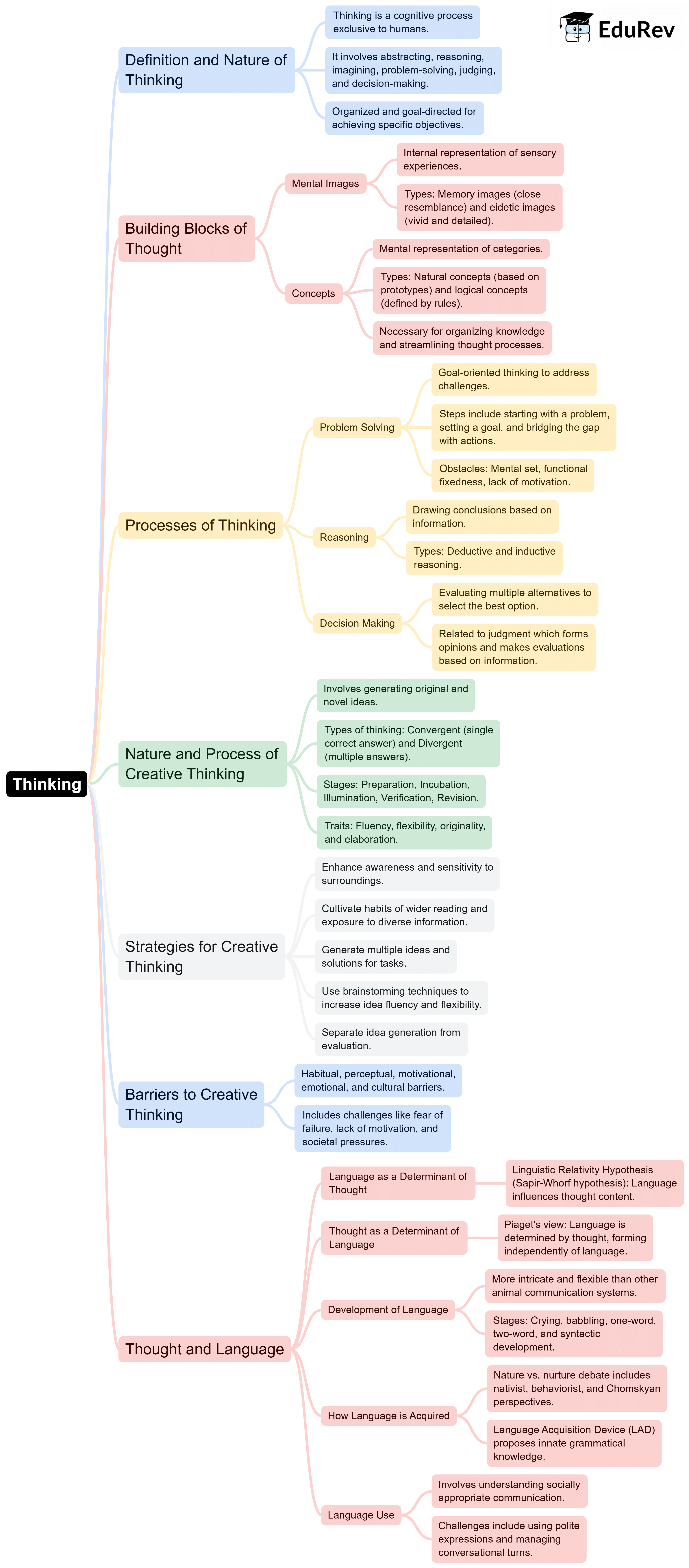Humanities/Arts Exam > Humanities/Arts Notes > Psychology Class 11 > Mind Map: Thinking
Mind Map: Thinking | Psychology Class 11 - Humanities/Arts PDF Download

The document Mind Map: Thinking | Psychology Class 11 - Humanities/Arts is a part of the Humanities/Arts Course Psychology Class 11.
All you need of Humanities/Arts at this link: Humanities/Arts
|
43 videos|88 docs|18 tests
|
FAQs on Mind Map: Thinking - Psychology Class 11 - Humanities/Arts
| 1. What is the significance of humanities and arts in understanding human culture? |  |
Ans. The humanities and arts play a crucial role in exploring and interpreting human culture. They provide insights into the values, beliefs, and experiences of different societies throughout history. By examining literature, philosophy, history, and the arts, individuals can better understand the complexities of human behavior and the influences that shape our world. This understanding fosters empathy and critical thinking, allowing us to appreciate diverse perspectives and cultural expressions.
| 2. How do the humanities contribute to critical thinking skills? |  |
Ans. The humanities encourage critical thinking by challenging individuals to analyze texts, artworks, and historical events. Through interpretation and discussion, students learn to evaluate arguments, question assumptions, and formulate their own opinions. This analytical process enhances their ability to think creatively and approach problems from various angles, skills that are valuable in both personal and professional contexts.
| 3. In what ways can studying the arts promote social change? |  |
Ans. Studying the arts can promote social change by raising awareness of societal issues and inspiring action. Artistic expressions, such as literature, visual arts, and performance, can highlight injustices and provoke discussions about topics like inequality, discrimination, and environmental concerns. By engaging audiences emotionally and intellectually, the arts can motivate individuals to advocate for change and contribute to social movements.
| 4. What are some key differences between the humanities and the sciences? |  |
Ans. The humanities focus on understanding human experiences, culture, and values through qualitative analysis, while the sciences emphasize empirical research and quantitative methods to explain natural phenomena. Humanities explore subjective interpretations, ethics, and social contexts, whereas sciences seek objective truths and measurable outcomes. Both fields, however, are essential for a well-rounded understanding of the world and complement each other in various ways.
| 5. How do the humanities and arts influence personal identity? |  |
Ans. The humanities and arts significantly influence personal identity by shaping individuals' understanding of themselves and their place in society. Through engagement with literature, music, and visual arts, people can explore their own experiences and cultural backgrounds. This exploration fosters self-reflection, enabling individuals to construct their identities while also connecting with broader social narratives and histories.
Related Searches





















